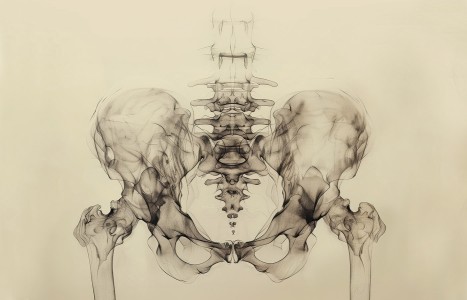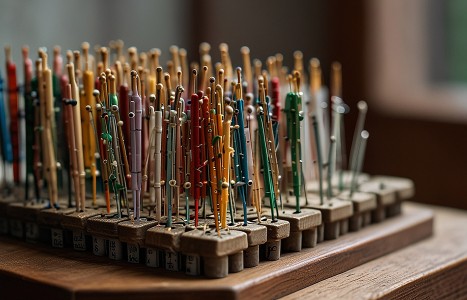People today want convenience, whether it be from their bank, credit card, favorite retail store, or restaurant. They demand it from the companies who hold their loyalty, including their health care providers (you). They don’t want to call and possibly be put on hold, and they want to use an app or schedule an appointment on your website. Here are three reasons your practice can gain by switching to online appointment scheduling.
The Price of Western Medicine and the Promise of Eastern Medicine
I would like to put Western medicine into perspective. The training focuses on hospitalized patients, and the profession's greatest successes lie in saving life and limb: fighting serious infection, severe trauma, and life-threatening deterioration of major organs. When a patient needs to be hospitalized, Western diagnostics, surgery and pharmaceutical medicine prove to be almost miraculous, and our society has benefited from this knowledge and application. No one would discount its remarkable effectiveness compared with 150 years ago.
However, modern medical science certainly does not come without a high price tag. Typical medical school graduates have accumulated debts between $250,000 and $300,000.1 They are driven to repay these debts, and the best and brightest gravitate to higher-paying specialties such as orthopedics, surgery, dermatology, gastroenterology and endocrinology. Specialists routinely charge $100 to $500 per visit, (although insurance companies end up paying less), and the cost of medical visits are the first factor dictating why medical expenses are so high.
Specialties require advanced diagnostic technology such as X-ray, CT scan, MRI, and specialized blood tests. A contrast CT scan without insurance, for example, costs $3,000. Hospitalizations are astronomically expensive in the United States compared to countries such as France or Japan.
The price of pharmaceuticals is also driving up medical costs. The newer drugs cost more than $100 for a one-month supply. As people age, they find themselves on more and more pharmaceuticals, and these costs come out-of-pocket for the elderly on Medicare.2
The outcome for Americans is an unaffordable health care system. Prices are driven by either necessity (for the primary care physician or hospital) or outright avarice (specialists, insurance companies and the pharmaceutical industry). Politicians, the public and, finally, the medical profession, are now acknowledging a crisis situation, and wish to address it. In the national talk of correcting the situation, attention has focused on cost, availability and accessibility.
The situation that is not being addressed in any national discussion, however, also needs to be heard. Western medicine as it is being practiced today, outside of hospital crisis intervention, has become a therapy of expensive pharmaceutical medicines, and these medicines are an abject failure. They do not cure illness and they do not promote health. In fact, they typically weaken one's health or lead to a decline in quality of life. Data analysis has shown that Western medicine is one of the leading causes of death in this country.3
I want to be careful how I address this issue, so as not to offend medical friends or readers. The earnest physician is not at fault here; they have become a pawn of the pharmaceutical industry, which aggressively belittles safer and effective natural alternatives while spending large amounts of money promoting their drugs to the physician and the public alike.
The problem with Western pharmaceuticals compared to herbal therapies, is that they rarely cure the illness. How do I know? Because when you stop the medicine, the patient still has the problem. Think of the following conditions: thyroid, type 2 diabetes, acid reflux, asthma, osteoporosis, hypertension, depression, insomnia, seasonal allergies or headaches.
When the medicine is discontinued, even after years of use, the problem is still there. And there are numerous conditions for which the medicine does not work at all but is promoted regardless: eczema, ear infections, cough, irritable bowel syndrome, memory loss and dementia, Parkinson's, multiple sclerosis, and late-stage chemotherapy.
The demands of a busy outpatient clinic afford the Western practitioner a limited time to evaluate the patient, and they decide quickly which problem to prioritize. I think it is obvious that the general practitioner chooses from an arsenal of 13 or 14 types of medicines, and everyone who walks in their door gets one of them. If I were a typical medical doctor - well-trained and intelligent - I would blanch at the intellectual restrictiveness of this practice, and at the mechanical lifestyle my practice had become: four to six patients an hour, each getting a prescription from a list of 14 medicines, without time for an in-depth interview, counseling or any real detective work as to their overall health.
This approach to medicine is failing the public. It is mechanical, dishonest and ultimately harmful. When we look at Chinese herbal medicine, we see something very different. We see a medicine based on an ancient and deep understanding of how the human body works, and we choose medicinal herbs that allow correction and healing without side effects. The herbal medicines are less expensive. As the American public critically evaluates the limits of Western medicine in terms of its accessibility and affordability, we should also take a hard look at how Chinese herbal medicine could benefit society, both in cost and effectiveness.
Evaluating Herbs on Their Own Merit
This requires government-sponsored research to evaluate Chinese herbal medicines for safety and efficacy, on its own merits, and at a much greater clip then the 10 or so studies that the NIH authorizes per year. This does not mean dissecting and analyzing Chinese herbs for chemical properties that "explain" its mechanisms to an entrenched scientific mindset. It does mean evaluating the efficacy of Chinese herbal formulas for the treatment of disease compared to existing medical protocols.
For example, it is common for Western doctors to prescribe antibiotics for urinary tract infection. A simple comparison of the use of Ba Zheng Wan vs. the standard antibiotic would no doubt show that the herbal formula is at least as effective as the antibiotic, and may even be more effective.4 The advantage of proving Ba Zheng Wan would then encourage medical doctors, as well as the self-medicating public, to utilize an effective herbal medicine that does not carry the burden of encouraging "super bugs" or destroying essential gut flora that impacts the immune system.5
Scientists and medical physicians worry about several issues surrounding herbal medicines. One is the safety issue. Are the herbs contaminated? Are they safe? The question of contamination can be resolved by requiring GMP (Good Manufacturing Practices) levels on product production. The question of safety can be settled by using standard animal (mouse/rat) studies to determine toxicity; a relatively quick and inexpensive protocol.6
Standardizing Herbs
The other concern has been the need for standardization of herbal products, such that each herbal ingredient is extracted with consistent percentages of active ingredients. The medical world believes that clinical efficacy can only be researched with bio-identical formulas. I believe that this is a scientific conceit that would only add unnecessary cost to Chinese herbal products without significantly improving outcomes. Chinese herbs have latitude in potency. What is really important are the relative ingredient percentages of raw herbs in a combined formula.
The Western scientific community would like to evaluate medicinal herbs along the same lines as pharmaceuticals, but this is really unnecessary, and costly. Much of Europe has accepted this reality, calling herbs la médecine douce or "the gentle medicine." Because they don't pose the health risks that pharmaceuticals do, they do not need the high research standards established for potentially dangerous pharmaceuticals.
Many French medical doctors are comfortable in recommending (European) herbal medicines and homeopathics, which are available in pharmacies. They do so because they are comfortable with their safety.7 What is important is access to herbal formulas that have been tested for safety and efficacy along the lines I mentioned above, rather than trying to validate them using the same parameters applied to pharmaceuticals.
The American medical establishment is shooting itself in the foot by criticizing, demeaning or restricting the free flow of herbal medicines to the public. Chinese herbal medicines are more effective than Western medicines for common conditions: acid reflux, depression, anxiety, insomnia, asthma, infections, menstrual disorders, constipation, inflammation, etc.
For certain medical conditions, Chinese herbal medicines are without competition: the dissolution of kidney stones, viral infections (upper respiratory infections, cough, herpes simplex and shingles), ovarian cysts, etc. In several areas, herbal medicines are so effective that the economic impact of using them would dramatically reduce overall medical costs: common viral and bacterial infections, digestive problems such as acid reflux, control of liver degeneration in hepatitis C, infertility and in combined treatment (with chemotherapy) for cancer.8
As Western medical doctors gravitate toward the higher-paying specialties, the primary-care providers will be nurse practitioners and physician assistants. We should add practitioners of Oriental medicine, chiropractors and naturopaths to these gatekeeper positions, who can then refer to medical specialists for advanced diagnostics or therapies. Those patients preferring natural medicine for common ailments will have society's approval, and overall costs for health care will actually go down.
Our profession needs to work vigorously to educate the general public and government agencies about the cost and efficacy benefits of bringing Chinese herbal products into mainstream health care.
References
- www.sourceamerica.net/source_america_solutions.html.
- "Medicare drug spending increased by nearly 72 percent between 1997 and 2001, when adjusted for inflation. The surge was primarily driven by a 26 percent escalation in the average prescription price and a nearly 24 percent growth in the average number of medications used per beneficiary." Moeller JF, Miller GE, Banthin JS. Looking inside the nation's medicine cabinet: trends in outpatient drug spending by Medicare beneficiaries, 1997 and 2001. Health Affairs Sept-Oct 2004;23(5):217-25.
- "The total number of iatrogenic [induced inadvertently by a physician or surgeon or by medical treatment or diagnostic procedures] deaths is 783,936. The 2001 heart disease annual death rate is 699,697; the annual cancer death rate is 553,251. It is evident that the American medical system is the leading cause of death and injury in the United States." Gary Null PhD, Carolyn Dean MD ND, Martin Feldman MD, Debora Rasio MD, Dorothy Smith PhD. http://ourcivilisation.com/medicine/usamed.htm.
- It would not be necessary to compare the Chinese herbal formula against a placebo, because the antibiotic will have already been tested against a placebo.
- See Alternative Medicine for Children, The Consequences of Antibiotics.http://drjakefratkin.com/pdf/amc.pdf.
- Presently, the Food and Drug Administration (FDA) will not allow scientific studies on herbal products, because they would then be labeled as drugs, not supplements, as defined in the DSHEA act, and the manufacturer/distributor would be "violating" that agreement. A new category is required, somewhere between "food supplement" and "drug", which would include medicinal herbs, and allow for dissemination of scientific research and studies.
- No deaths or injuries have been reported with any GMP Chinese herbal product in the United States, despite the fact that Chinese herbs have been dispensed since 1980 among 15,000 acupuncture practitioners.
- See Tai Lahans: Integrating Conventional and Chinese Medicine in Cancer Care. A Clinical Guide (Churchill Livingstone Elsevier, 2007).


